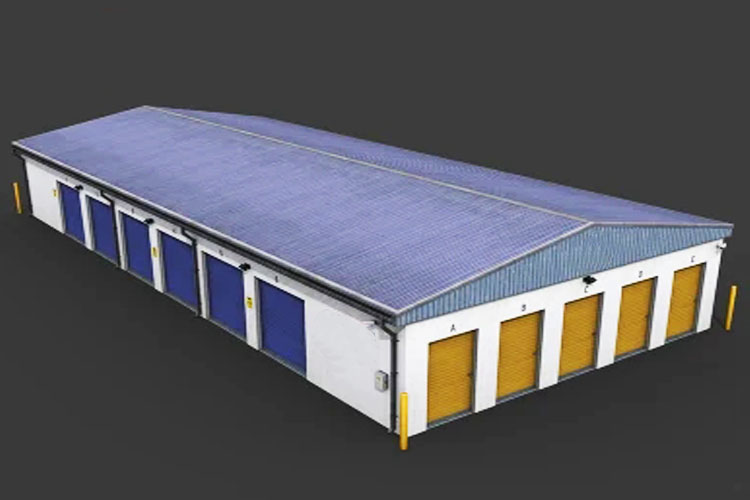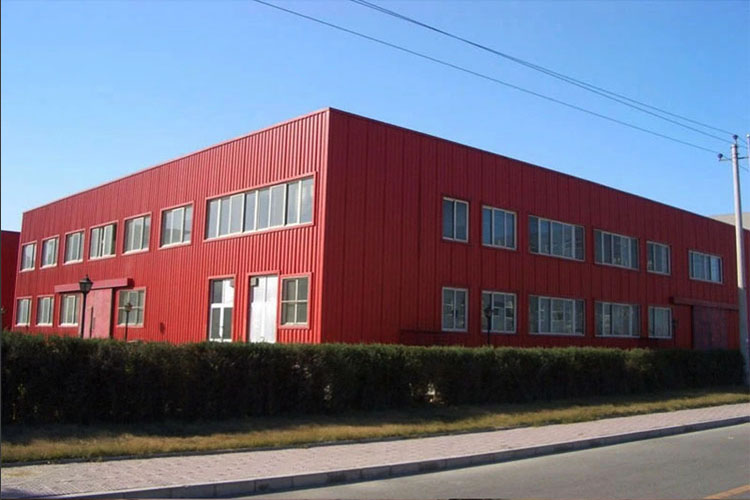What’s The Application Of Steel Structures Warehouse ?
Steel warehouses are gaining popularity in various industries due to their durability, versatility and cost-effectiveness. Steel structures, able to withstand extreme weather conditions, accommodate large storage volumes and provide ample space for operational activities, have become the first choice for warehouse construction. In this article, we explore the applications of steel warehouses and discuss the many benefits they provide.


Application of steel structure warehouse:
1. Industrial storage:
One of the main applications of steel structure warehouses is industrial storage purposes. Capable of housing large quantities of raw materials, finished goods and machinery, these warehouses play a vital role in ensuring efficient supply chain processes. Industries such as manufacturing, logistics and distribution rely heavily on steel warehouses to safely store inventory.
2. Storage of agricultural products:
Steel structure warehouses are also widely used for storage purposes in the agricultural field. These warehouses provide a suitable environment for storing crops, agricultural equipment, livestock feed and agricultural machinery. Farmers are able to withstand harsh weather conditions such as heavy rain, high winds and intense sunlight to ensure the safety and longevity of their produce.
3. Retail storage:
The retail industry, including supermarkets, shopping centers, e-commerce platforms, etc., often use steel structure warehouses to store goods. These warehouses provide ample space to store various products and enable efficient inventory management. These warehouses have the flexibility to customize the internal layout and are designed to meet specific retail needs, ensuring fast access to goods and smooth distribution.
4. Refrigeration:
Steel structure warehouses are also widely used in cold storage facilities. With proper insulation and temperature control systems, these warehouses can be kept at a constant low temperature and are suitable for storing perishable items such as fruit, vegetables, dairy products and pharmaceuticals. The steel structure's ability to effectively regulate temperature helps reduce spoilage and maintain product quality and freshness.
5. Manufacturing:
The steel structure warehouse provides an ideal environment for production and operation. Its spacious interior accommodates heavy machinery, assembly lines and production equipment. These warehouses have well-designed ventilation systems and plenty of natural light, providing manufacturing employees with a comfortable and safe working environment. Additionally, their open floor plans allow for the efficient movement of goods within the manufacturing space.


Advantages of steel structure warehouse:
1. Durability:
Steel structures are known for their strength and durability. They stand the test of time and can withstand harsh weather conditions such as earthquakes, hurricanes and heavy snow. Unlike traditional warehouses that age over time, steel warehouses provide a durable solution that ensures reliable storage space for years to come.
2. Cost performance:
Compared with traditional construction methods, steel structure warehouses are more cost-effective. Steel structure prefabrication greatly reduces construction time and labor costs. Additionally, steel is a recyclable material that saves raw material costs while promoting sustainability. These factors contribute to a cost-effective warehouse construction process.
3. Customizability:
Steel structure warehouses offer design and customization flexibility. They can be tailored to specific operational requirements, including interior layout, column spacing, door dimensions and mezzanine floors. This adaptability allows businesses to optimize their warehouse space based on their unique storage needs, increasing efficiency and maximizing storage capacity.
4. Construction speed:
Compared with traditional construction methods, the construction time of steel structure warehouses is greatly shortened. Prefabricated elements can be fabricated off-site, reducing construction time on the project site. This accelerated construction process allows businesses to start operations sooner, minimizing downtime and maximizing productivity.
5. Sustainability:
Steel is an environmentally friendly material widely recognized for its recyclability and minimal waste generated during production. Additionally, steel warehouses can be designed to incorporate energy-saving features such as solar panels, skylights, and insulation systems, reducing the overall carbon footprint. The sustainable development of steel structures meets the growing demand for environmentally friendly solutions in warehouse construction.
Steel warehouses have become an integral part of various industries due to their versatility, durability and cost-effectiveness. From industrial warehousing to retail warehousing and cold storage facilities, these warehouses meet different applications while providing numerous advantages. Steel structure warehouses that can withstand extreme weather conditions, provide sufficient storage space, and ensure efficient operating processes will continue to be the first choice for future warehouse construction.
Post time: Jul-27-2023
